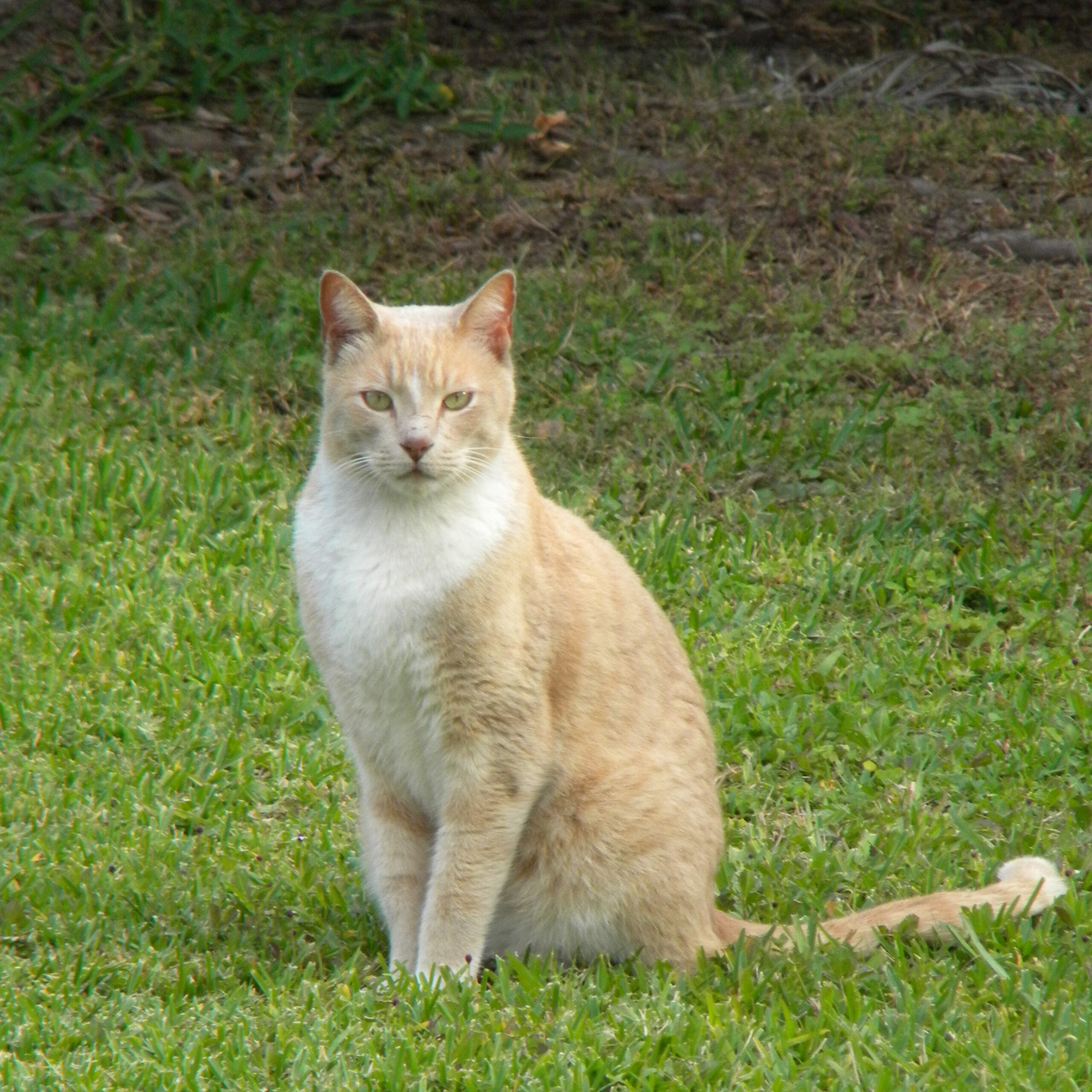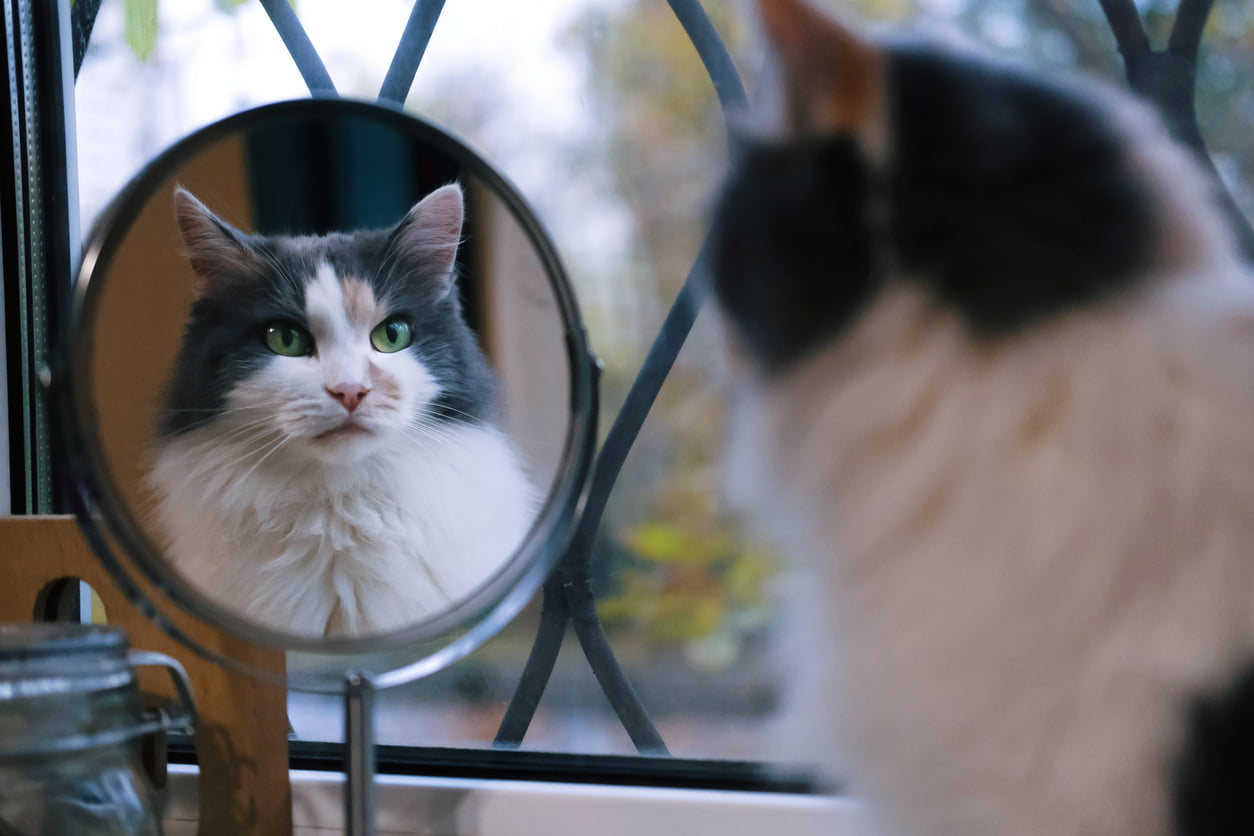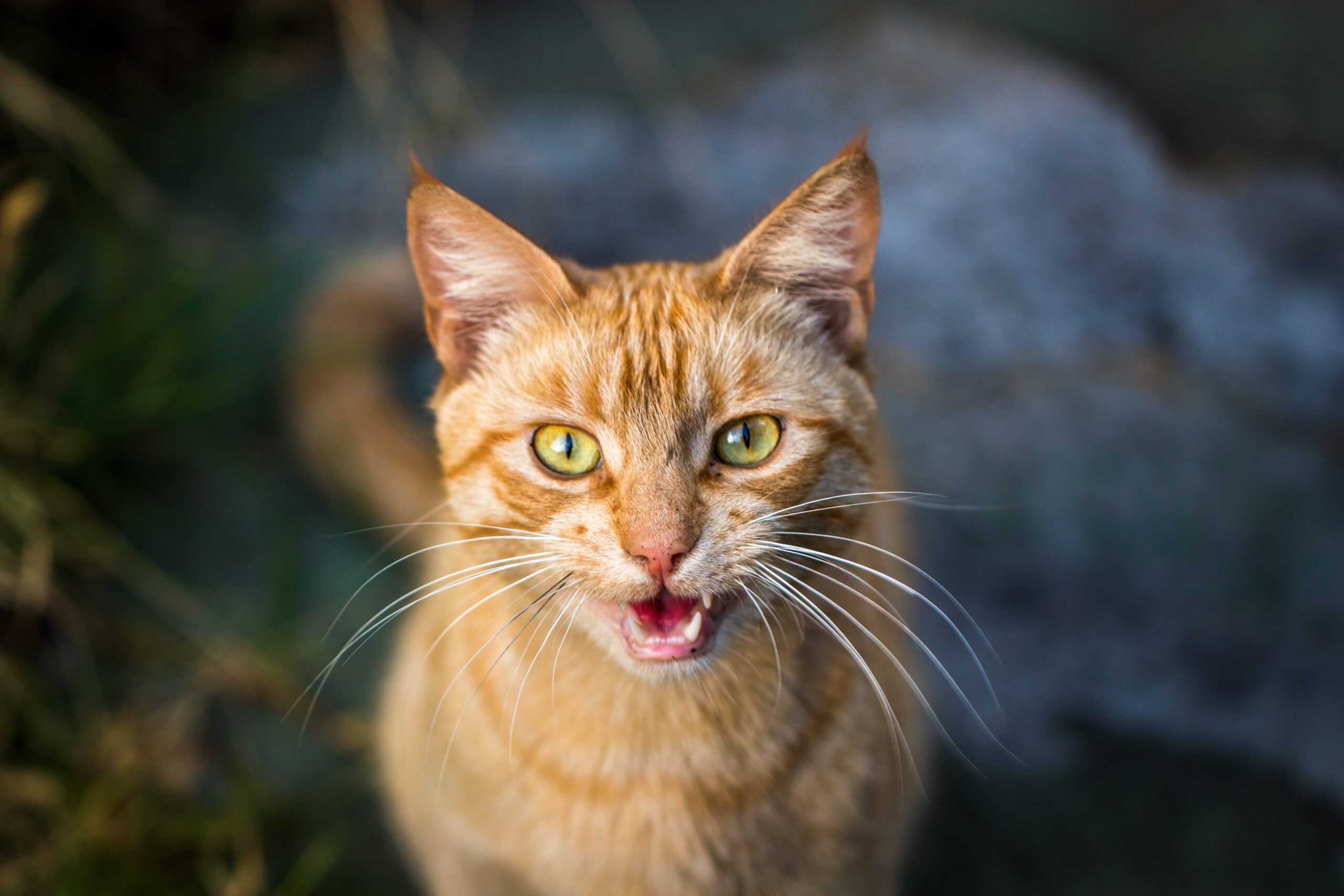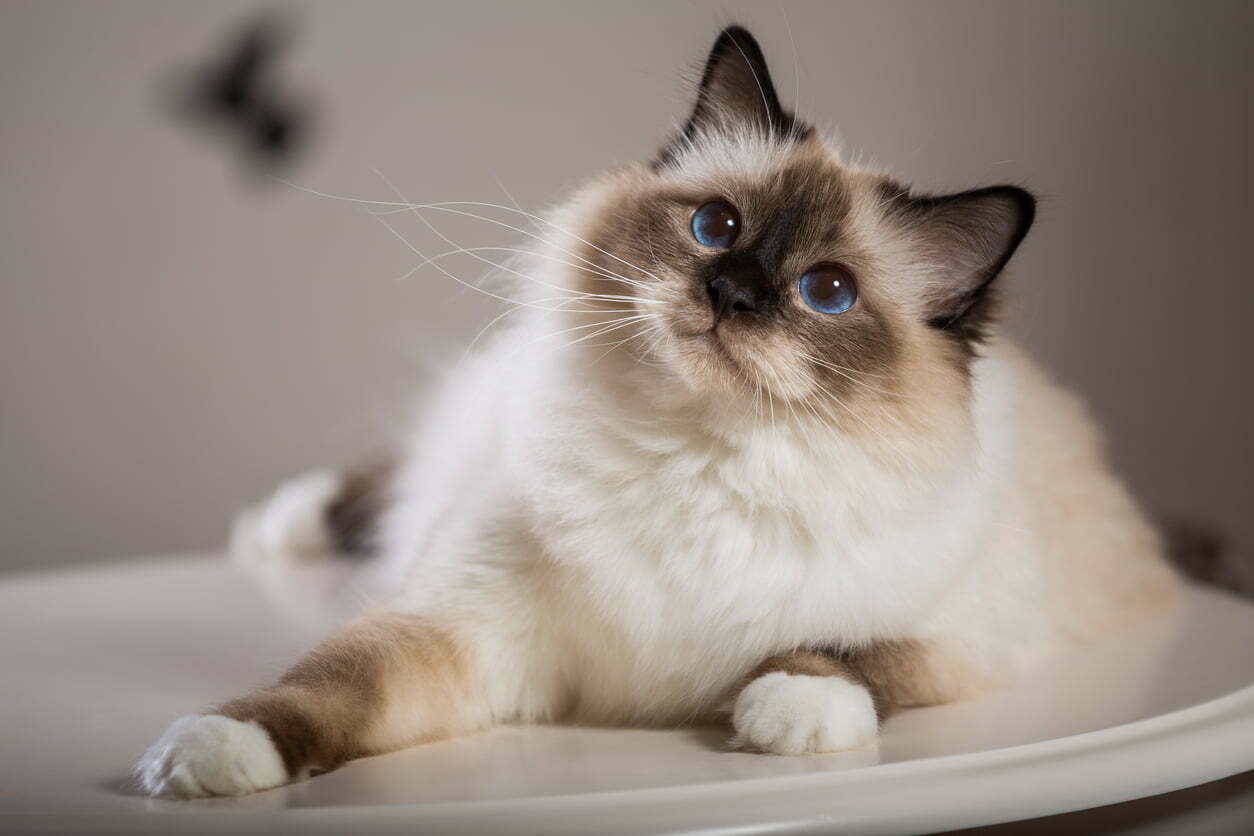Have you ever wondered if your furry feline friend is more than just a cute companion? Do cats possess a level of sentience similar to humans, experiencing emotions and self-awareness? In this captivating exploration of “Are cats sentient?” we delve into the fascinating world of feline emotions, communication, and behavior while considering the broader implications for animal welfare and the search for extraterrestrial intelligence.
Key Takeaways
- Cats demonstrate complex emotions, problem-solving skills, and self-awareness, such as recognizing themselves in mirrors, which supports their sentient nature.
- They experience a wide range of emotions, including happiness, fear, and jealousy, indicating their ability to feel and express sentient thoughts.
- Recognizing cats’ sentience highlights the importance of considering their emotional and physical needs for their welfare and underscores the ethical responsibilities of pet ownership and care.
The Sentience of Cats: A Closer Look

To start, Yes, cats are sentient. Cats, like humans, are complex creatures with a range of emotions, thoughts, and experiences. They possess the capacity to experience pleasure and pain, displaying unique behaviors and reactions that suggest a level of sentience. Domestic cats, or Felis catus, demonstrate emotional intelligence, recognizing their own name, displaying emotions, and exhibiting problem-solving skills. The scope of animals considered sentient is growing, and many cats are now acknowledged as cats sentient beings.
The distinction between sentience and consciousness is essential in understanding feline sentience. Sentience pertains to a living organism’s sensations of suffering and pleasure, whereas consciousness is more comprehensive in regards to a living organism’s cognizance of its own ideas or presence. Cats possess various forms of consciousness and are known to experience complex dreams.
Recognizing sentience in cats is vital as it not only enhances our understanding of their inner world but also strengthens the bond between cat and owner.
Sentient Beings and Nonhuman Animals
Sentience in nonhuman animals refers to their capacity to experience, reason, gain knowledge from, and react to their external and internal environments. Mammals and birds are generally considered to possess sentience. In the case of cats, if sentience is defined as the capacity to experience emotions, they could be considered sentient beings. Tibetan Buddhism defines sentient beings as those who gravitate towards what is beneficial and avoid what may be detrimental, encompassing both humans and nonhuman animals, such as cats.
The discourse around cat sentience revolves around their capacity to experience and express emotions, with some arguing that they operate mainly on instinct and lack true sentience. However, welfare-aligned sentience recognizes that researchers have yet to exhaust their ability to definitively establish the sentience of numerous other living creatures.
Acknowledging the sentience of companion animals plays a crucial role in animal welfare law, veterinary practice, and the moral obligations of pet owners.
Emotional Beings: Cat Emotions and Reactions
Cats are capable of experiencing a wide array of animal emotions, such as happiness, fear, jealousy, depression, anger, grief, and playfulness. Understanding these emotions is crucial in interpreting and catering to our feline friends’ needs. Cat owners can decipher their pet’s emotions by analyzing their body language and behaviors. For instance, a cat may display aggression when provoked, such as when they do not receive the treats they expect.
Cats demonstrate emotional intelligence, an essential component of their intelligence. Their ability to process and respond to various emotional stimuli allows them to form strong connections with their caregivers and fellow feline companions. By nurturing a deeper understanding of cat emotions and reactions, we can develop a more compassionate and empathetic approach to their care and well-being.
The Role of the Nervous System in Feline Sentience
The nervous system plays a pivotal role in determining feline sentience and self-awareness. Based on the empirical definition, a living being must possess pain receptors and a nervous system, as well as automatic and learned behavioral reactions to the environment, to be deemed sentient. The nervous system is responsible for processing sensory information and coordinating responses to stimuli, which is integral to feline sentience.
Understanding the role of the nervous system in feline behavior is crucial in recognizing and catering to their emotional and behavioral needs. By acknowledging the intricate interplay between the nervous system and sentience, we can better appreciate our feline companions’ profound emotional depths and complexity.
Self-Awareness in Cats: Evidence and Observations

Self-awareness, a cognitive capability possessed by animals with advanced cognition, is often assessed through the mirror test, which involves observing if a species can recognize themselves when presented with a mirror. Studies have demonstrated that cats can recognize themselves in a mirror, as evidenced by their behavior when presented with a mirror. They tend to approach the mirror, sniff it, and then move away, suggesting that they recognize their own reflection.
Other evidence suggesting self-awareness in cats includes their capacity to recognize and react to their own name, their ability to recognize and react to other cats, and their capacity to recognize and react to their owners. Many cat owners have reported that their cats appear to recognize themselves in mirrors, as well as identify and react to their own name, other cats, and their owners.
This evidence and observation provide a compelling argument for feline self-awareness, making cats aware of their own existence.
Mirror Test: Cats and Self-Recognition
The mirror test is a widely utilized behavioral technique employed to determine an animal’s ability to recognize its own reflection in a mirror as a representation of itself. A successful result on the mirror test indicates that the animal understands that the image in the mirror is of itself rather than another individual. Research has indicated that cats are unsuccessful in the mirror test, suggesting that they are not cognizant of their reflection in the mirror.
The results of the mirror test indicate that cats may not possess the same level of self-recognition as other animals, such as primates. This could suggest that cats may not exhibit the same level of self-awareness as other animals. However, it is important to note that the mirror test is just one method of assessing self-awareness, and other evidence, such as social interactions and vocalizations, may provide a more comprehensive understanding of feline self-awareness.
Adult Cat Interactions: Social Awareness and Recognition
Adult cats possess socio-cognitive abilities that allow them to discern the emotions of their close associates, distinguish their owners’ voices from those of unfamiliar persons, and form strong connections with other animals. They are capable of recognizing other cats, both familiar and unfamiliar, through facial features, body language, and vocalizations, as well as identifying their own scent and the scent of another cat.
As social creatures, adult cats partake in social behaviors such as grooming, playing, and cuddling, demonstrating their ability to recognize and respond to the sentiments of other cats and form robust social ties with their owners. These adult cat interactions provide further evidence of their social awareness, recognition, and ultimately, self-awareness.
Cat Owners’ Experiences: Anecdotal Evidence of Feline Self-Awareness
While scientific research provides valuable insights into feline self-awareness, anecdotal evidence from cat owners can also offer a unique perspective. Many cat owners have observed their cats appearing to recognize themselves in mirrors, as well as identifying and reacting to their own name, other cats, and their owners.
This anecdotal evidence, combined with scientific research and observations, contributes to a multifaceted understanding of feline self-awareness. By considering both scientific and anecdotal evidence, we can develop a more comprehensive appreciation for the intricate emotional and cognitive world of our feline companions.
The Complexity of Feline Behavior: Understanding Cat Communication

Feline behavior and communication are highly complex and varied, with cats employing vocalizations, body language, and scent marking to communicate with their peers. Understanding the complexity of feline behavior and communication is essential to ensuring cats receive the best possible care, as it can facilitate comprehension of their requirements and behaviors and allow us to create an optimal environment for them.
By delving into the diverse forms of communication utilized by cats, we can gain a deeper understanding of their emotional and cognitive landscape, enhancing our ability to empathize with and care for these enigmatic creatures.
Vocalizations: What Are Cats Saying?
Cats are known to produce a wide variety of vocalizations, ranging up to 21 distinct sounds. These include meowing, purring, hissing, growling, chirping, and chattering. Each vocalization has its own unique significance: meowing is used to convey messages to humans, purring signifies contentment, hissing indicates aggression, growling warns of potential danger, chirping expresses excitement, and chattering signifies frustration.
Recognizing and interpreting these vocalizations is crucial in understanding and responding to our cats’ needs and desires. By becoming attuned to the subtle nuances of feline vocalizations, we can foster a more harmonious and empathetic relationship with our feline companions.
Body Language: Reading Your Cat’s Signals
Cats communicate through body language, sending signals through tail quivering, low and tucked tail, rubbing, kneading, and loose and gently curved body posture. Deciphering these signals can be challenging, as cats can display a variety of emotions through their body language.
To interpret cat body language, look for signs such as tail quivering (excitement), low and tucked tail (fear or submission), rubbing (affection), kneading (contentment), and loose, gently curved body posture (relaxation). By understanding these signals, we can better respond to our cats’ emotional states and provide appropriate care and support.
Purring: More Than Just Contentment
Purring is often associated with contentment, but it serves multiple purposes in feline behavior and communication. Purring can function as a self-soothing mechanism, allowing cats to relax and reduce stress and anxiety levels. It can also be employed as a form of communication, conveying emotions such as contentment, pleasure, and even distress.
In addition to its emotional and communicative functions, purring has been found to have healing properties, reducing pain and inflammation and promoting bone healing. Purring, therefore, is not only a sign of contentment but also serves as a vital component of feline well-being and communication.
Animal Welfare Implications: The Importance of Recognizing Sentience

Recognizing animal sentience is critical for the improvement of animal welfare, including the elimination of high-risk practices and the alteration of the attitudes and behavior of researchers and caretakers. By acknowledging the sentience of cats, we can identify their needs and evaluate their welfare in varying circumstances.
Understanding the ethical responsibilities incumbent upon cat owners is essential in ensuring the well-being of our feline companions. This includes providing appropriate nutrition, shelter, and medical care, as well as treating our cats with love, respect, and an awareness of their emotional needs.
Veterinary Practice: Considering Cat Emotions in Treatment
Recognizing feline emotions is critical in veterinary practice, as it can influence their conduct, reaction to treatment, and general health. Veterinarians ought to be cognizant of the emotional state of cats during consultations and furnish a tranquil atmosphere to abate unease.
Acknowledging the sentience of cats can help enhance their care and welfare, as well as provide a deeper insight into their behavior and requirements. By considering the emotions of cats in veterinary treatment, we can ensure that they receive the most suitable care and support.
Ethical Responsibilities of Cat Owners
The ethical responsibilities of cat owners encompass providing appropriate nutrition, shelter, and medical care for their cats, ensuring their cats do not cause harm to other animals or the environment, and treating their cats with love and respect. Adequate nutrition, shelter, and medical care are imperative for cats to remain healthy and content, while ensuring they do not cause harm to other animals or the environment is paramount for maintaining ecological balance.
Treating cats with love and respect is of utmost importance for their well-being. Cats necessitate feeling secure and safe in order to flourish, and this can be accomplished through positive reinforcement, playtime, and fondness. Recognizing and respecting the sentience of cats can foster a more empathetic and compassionate approach to their care.
Alien Intelligence: The Potential Existence of Sentient Beings Beyond Earth
The possibility of sentient beings beyond Earth is a captivating topic that has captured the imagination of researchers and the general public alike. The concept of sentience in cats may offer insight into the potential for sentient beings beyond Earth, as it demonstrates the capacity for emotional and cognitive complexity in a sentient being like a cat.
Examining the behavior and emotions of cats may enable us to better comprehend the possibility of sentient life beyond our planet. By acknowledging the sentience of cats and other nonhuman animals, we broaden our understanding of the diversity of life and the potential existence of extraterrestrial intelligence.
Summary
In conclusion, cats are fascinating creatures, possessing a rich and complex emotional and cognitive landscape. By exploring the concept of sentience and self-awareness in cats, we can deepen our understanding of their behavior, communication, and emotional experiences. Furthermore, this knowledge can help us provide the best possible care for our feline companions, ensuring their health, happiness, and welfare. As we continue to unravel the mysteries of feline sentience, we also expand our horizons in the search for sentient beings beyond Earth, opening new doors to understanding the vast and diverse universe we inhabit.
Frequently Asked Questions
Are cats aware of their own existence?
Evidence suggests that cats are aware of their own existence to some degree. They can learn to recognize their own reflection in a mirror, and studies have shown that more evolved mammals, such as bonobo chimpanzees, elephants, and dolphins, have a capacity for immediate self-recognition.
Ultimately, cats may be aware of their own existence, but the extent remains unknown.
Do cats have sentient thoughts?
Given the structure of cats’ brains, most experts agree that they have a certain degree of sentience and are capable of forming complex cognitive thoughts. Overall, the evidence suggests that cats are capable of displaying sentient thinking, leading to complex responses and behaviors.
How conscious are cats?
It is evident that cats are conscious creatures that possess the intelligence to actively engage with their environment. They demonstrate emotional range and exhibit sophisticated levels of thought, indicating an ability to remember and learn from experience.
All this shows that cats have a sophisticated level of consciousness.
Are cats Sapient or sentient?
Based on the research, cats are included in the list of creatures that are considered sentient and have the capacity for conscious thought and emotional response.
Therefore, it is clear to conclude that cats are indeed both sapient and sentient.
How do cats communicate with humans and other cats?
Cats often express themselves through a range of noises, such as meowing and hissing, as well as body postures and eye contact. Through communication methods such as purring, meowing, and physical touch, cats convey their feelings to humans and other cats alike. They also use scent markings to show their presence in a given area.
